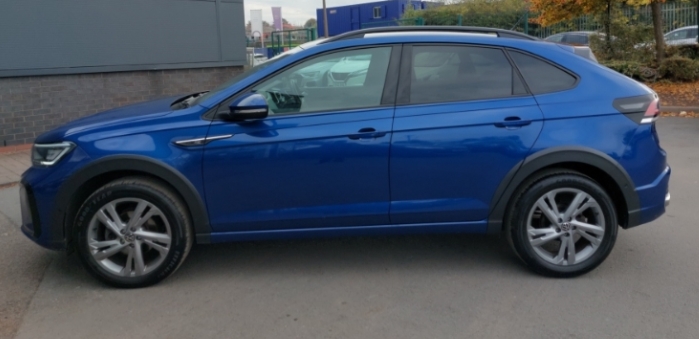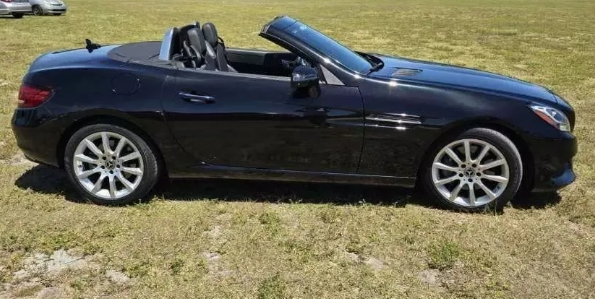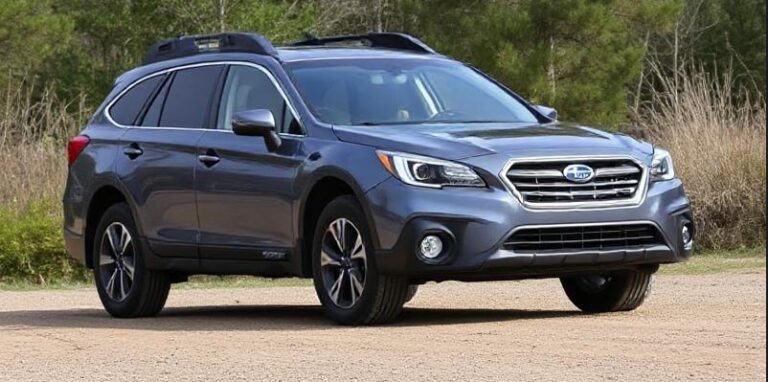The Volkswagen Taigo: A Stylish Evolution in the Compact SUV Landscape
The Volkswagen Taigo, while a relatively recent entrant into the global automotive market, represents a fascinating evolution in Volkswagen’s strategy for the compact SUV segment. It’s a vehicle born from a specific market demand – a desire for a stylish, coupe-like SUV that retains the practicality and efficiency of its more traditional counterparts. Unlike some of its more established siblings, the Taigo’s story isn’t one of decades-long lineage but rather a targeted, feature-rich introduction designed to capture a discerning buyer. This article will delve into the factual evolution of the Volkswagen Taigo, exploring its origins, production years, and the various models and trim levels that have defined its journey.
Origins and Conception: A Strategy for Style and Versatility
The Taigo’s genesis can be traced back to Volkswagen’s growing recognition of the burgeoning demand for SUVs, particularly those with a more dynamic and aesthetically pleasing silhouette. While the T-Cross offered a more conventional compact SUV experience, and the Tiguan catered to a larger segment, there was a gap for a vehicle that blended sporty design with everyday usability. The Taigo was conceived as Volkswagen’s answer to this – a “coupe-SUV” positioned below the larger Tiguan and T-Roc, offering a distinctive styling that set it apart from the crowd.
Its development was heavily influenced by emerging market trends, particularly in Europe and South America, where consumers were increasingly drawn to vehicles that looked good while still providing ample space and practicality. The Taigo draws its architectural foundation from Volkswagen’s ubiquitous MQB A0 platform, the same underpinnings shared by the Polo, T-Cross, and various other MQB-based vehicles. This platform provided a robust and cost-effective base for Volkswagen to develop a vehicle with familiar driving dynamics and a high degree of component standardization.
The Dawn of the Taigo: Launch and Initial Offerings (2020 – Present)
The Volkswagen Taigo officially made its global debut in 2020. However, its market-specific rollout began in earnest in 2021. It’s important to note that while the Taigo is presented as a distinct model in many markets, it is closely related to the Volkswagen Nivus, which was launched in South America in 2020. The Nivus serves as the precursor and a near-identical sibling to the Taigo, sharing its fundamental design and platform. For the purpose of this article, we will focus on the Taigo as marketed in Europe and other select international markets.
From its inception, the Taigo was positioned as a stylish and modern compact SUV, characterized by its sloping roofline, elevated driving position, and range of efficient powertrains. Volkswagen aimed to create a vehicle that appealed to younger buyers and those seeking a more expressive alternative to traditional SUVs.
Models and Trim Levels: A Tiered Approach to Style and Features
Volkswagen typically employs a tiered trim level strategy across its model range, and the Taigo is no exception. The names and specific feature sets can vary slightly by market and evolve over time, but the core philosophy remains: offering increasing levels of equipment, technology, and stylistic differentiation as you move up the range.
Initial Launch and Core Models:
Upon its introduction, the Taigo was typically offered with a selection of efficient petrol engines and presented in distinct trim levels designed to cater to different buyer preferences.
Taigo (Base Model): The entry-level Taigo provided the core styling and functionality of the coupe-SUV. Even at its most basic, it featured Volkswagen’s contemporary design language, with LED lighting and a generally well-appointed interior. Standard equipment often included essentials like air conditioning, power windows, and a basic infotainment system. Engine options at launch usually included the reliable 1.0-liter TSI (turbocharged direct injection) petrol engine in various power outputs (e.g., 95 PS or 110 PS), often paired with a manual gearbox, with the option of an automatic DSG transmission for higher-powered variants.
Taigo Life: This trim level represented an elevation from the base model, adding more comfort and convenience features. The “Life” designation typically signifies a focus on everyday usability and enhanced passenger experience. Equipment upgrades could include larger alloy wheels, a more advanced infotainment system with smartphone integration (e.g., Apple CarPlay and Android Auto), improved interior trim materials, and possibly features like a leather-wrapped steering wheel and gear knob. Engine options would mirror those of the base model, often with wider availability of automatic transmissions.
Taigo Style: The “Style” trim level emphasized a more sophisticated and premium feel. Aesthetic enhancements were a key focus, often featuring more distinctive exterior design elements. This could include chrome accents, larger and more intricate alloy wheel designs, and specific interior detailing. Inside, the Style trim typically offered advanced features such as ambient lighting, upgraded seat upholstery, and potentially more sophisticated driver assistance systems.
Taigo R-Line: Positioned at the sportiest end of the spectrum, the “R-Line” trim brought a distinctly aggressive and dynamic character to the Taigo. Drawing inspiration from Volkswagen’s performance “R” models, the R-Line featured sportier bumpers, side skirts, a rear diffuser, and often unique R-Line badging. The interior received a similar treatment with sport seats, a dedicated R-Line steering wheel, and sportier interior trim accents. Mechanically, the R-Line was typically offered with the more powerful engine options, further emphasizing its sporty intent.
Engine Options Across the Range:
Through its evolution, the Taigo has primarily been offered with a range of fuel-efficient turbocharged petrol engines:
1.0 TSI: This three-cylinder engine is a mainstay of Volkswagen’s compact offerings. It has been available in various power outputs, commonly around 95 PS (often paired with a 5-speed manual transmission) and 110 PS (typically available with a 6-speed manual or a 7-speed DSG automatic transmission). This engine provides a good balance of performance and economy for urban driving and everyday commuting.
1.5 TSI: For those seeking more power and refined performance, the four-cylinder 1.5-liter TSI engine has also been a key offering, usually producing around 150 PS. This engine is almost exclusively paired with the 7-speed DSG automatic transmission and provides a more effortless driving experience, particularly at higher speeds and when overtaking.
Diesel engines are generally not offered in the Taigo, reflecting the market trend towards petrol and increasingly electrified powertrains in this segment.
Evolution of Features and Technology:
Since its launch, Volkswagen has consistently updated and refined the Taigo’s feature list, reflecting advancements in automotive technology and evolving consumer expectations. Key areas of evolution have included:
Infotainment Systems: The Taigo has seen a progression in its infotainment offerings. Early models featured Volkswagen’s Composition Media or Discover Media systems, providing touchscreen interfaces, Bluetooth connectivity, and optional navigation. Later iterations and updates have seen the integration of larger, higher-resolution screens, enhanced voice control, and improved wireless connectivity options. The introduction of Volkswagen’s latest generation of infotainment software has further streamlined the user experience.
Driver Assistance Systems: Safety and convenience have been paramount. The Taigo has consistently offered a suite of driver assistance systems, which have become more sophisticated over time. Standard or optional features have included:
Front Assist with City Emergency Braking and Pedestrian Monitoring: A crucial safety feature that helps prevent or mitigate frontal collisions.
Lane Keeping System (Lane Assist): Helps keep the vehicle centered within its lane.
Adaptive Cruise Control (ACC): Maintains a set speed and distance from the vehicle in front, often with a Stop & Go function for traffic jams.
Blind Spot Monitor: Warns the driver of vehicles in their blind spots.
Rear Traffic Alert: Aids in reversing out of parking spaces by detecting approaching traffic.
Parking Sensors and Rear-View Camera: Facilitate easier parking and maneuvering.
Connectivity: As expected in a modern vehicle, the Taigo has embraced digital connectivity. Features like Volkswagen’s We Connect services have been integrated, allowing for remote vehicle access, online services, and vehicle status updates through a smartphone app. Wireless App-Connect (Apple CarPlay and Android Auto) has become increasingly standard or widely available across trim levels.
Lighting Technology: From LED headlights and taillights as standard or optional features, the Taigo has embraced modern lighting for improved visibility, safety, and a distinctive visual identity.
Market Specifics and Future Outlook:
It’s important to reiterate that the Taigo’s exact specification, trim levels, and engine availability can differ significantly between different international markets. For instance, markets where the Nivus is sold might have slightly different naming conventions or feature packages.
Looking ahead, the Volkswagen Taigo’s evolution will undoubtedly be influenced by the broader automotive industry trends. The push towards electrification will likely see the introduction of hybrid or fully electric variants in the future, although specific timelines remain unconfirmed by Volkswagen. Furthermore, continuous updates to infotainment systems, driver assistance technologies, and interior refinement are to be expected as Volkswagen strives to keep the Taigo competitive in the dynamic compact SUV segment.
.

.
Conclusion:
The Volkswagen Taigo, though a newcomer, has quickly established itself as a compelling option for those seeking a stylish and practical compact coupe-SUV. Its evolution has been marked by a clear strategy: to leverage a proven platform and deliver a design-led vehicle with a comprehensive range of features and efficient powertrains. From its initial launch with distinct trim levels like Life, Style, and R-Line, the Taigo has seen continuous refinement in its technology, safety features, and connectivity. As it progresses, the Taigo represents Volkswagen’s adaptability and foresight in catering to evolving consumer demands for vehicles that are not only functional but also emotionally appealing. Its journey so far demonstrates a successful integration of sporty aesthetics with the inherent practicality that consumers have come to expect from the Volkswagen brand.







